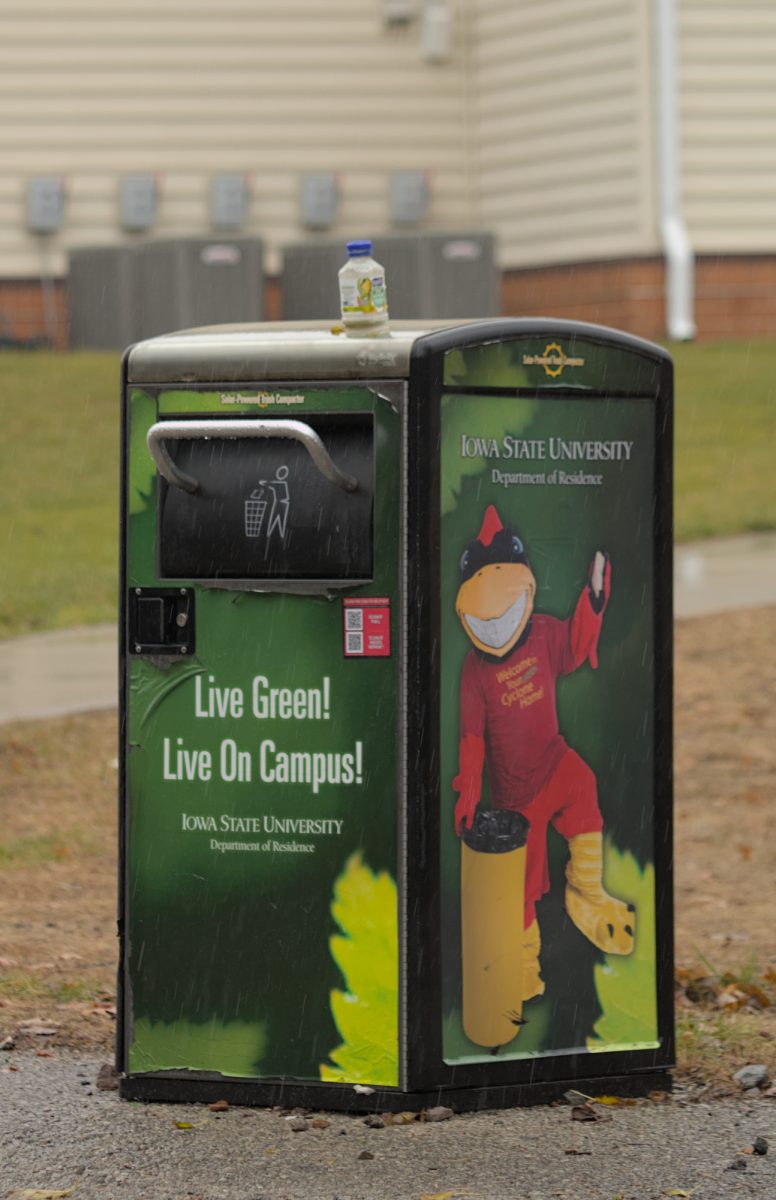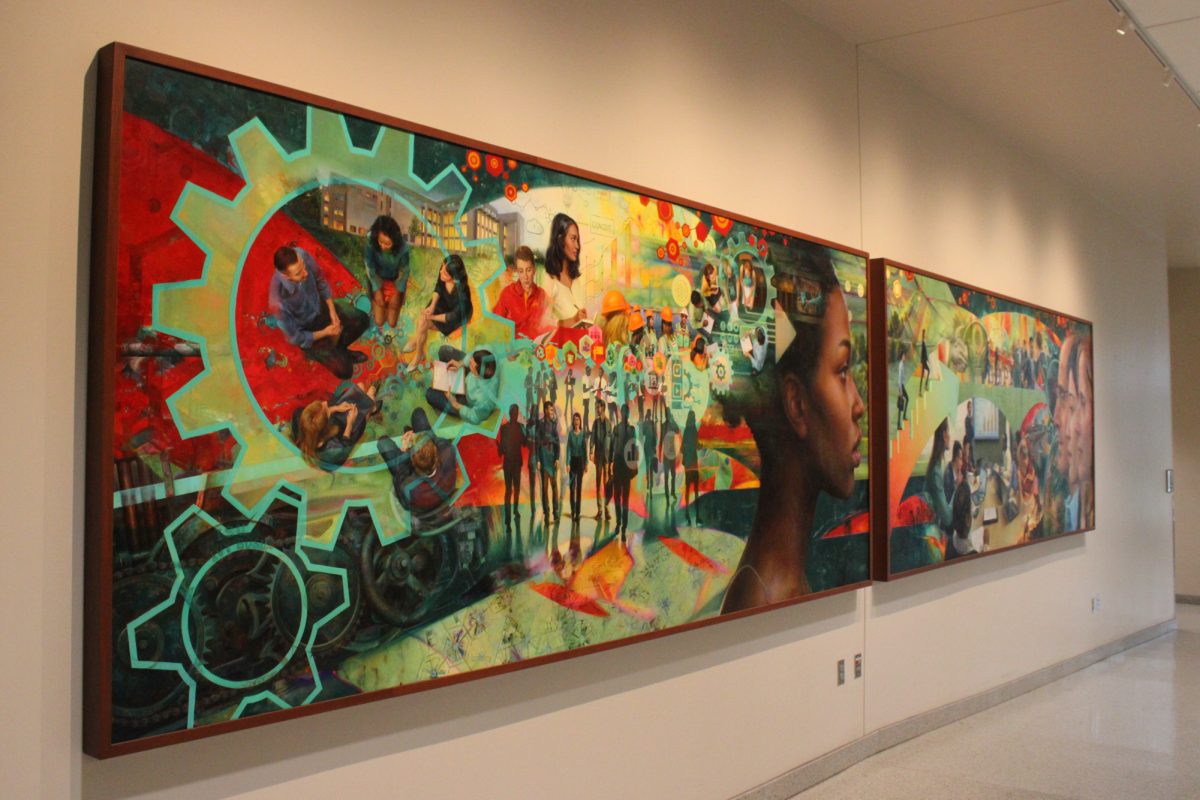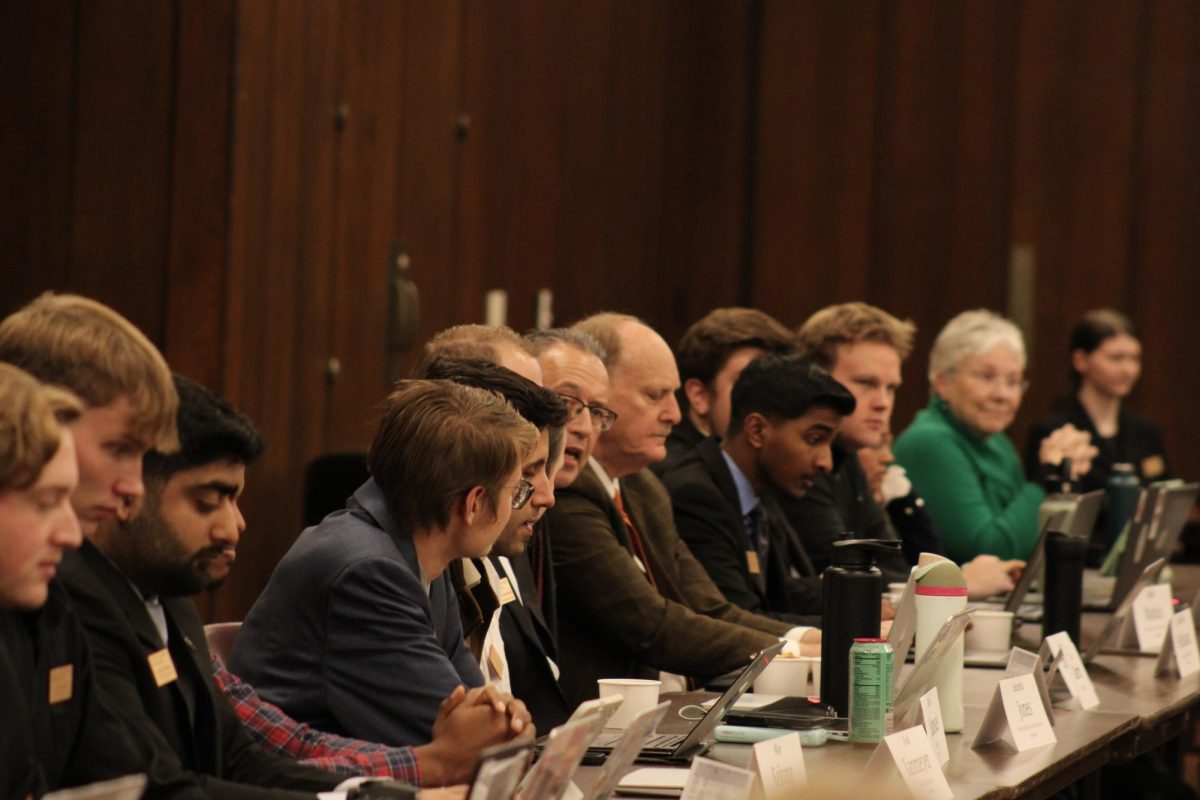COLUMN:`Steely Dubya’ owes us explanation
March 11, 2002
Where, oh where, did the free-market principles of our fearless leader go last Wednesday; whereupon President Bush imposed “temporary” quotas and tariffs ranging from 13 to 30 percent on steel imports from many of our allies? Or perhaps a better question: Were they ever there to begin with? President Bush has shown about as much backbone as Clinton has when it comes to principles.
After all, this is the president that has already been intimidated into intervening into California’s “deregulation” debacle, returning to New Deal-era crop subsidies, and propping up airlines that were failing long before Sept. 11. Why should it come as any surprise now that our ideologue-in-chief now has cold feet?
In every one of these cases, the compromise of principle has been seen hand-in-hand with poll numbers. In California, Bush succumbed to the demagogic scare tactics of Gray Davis in fear of alienating Californians, who ironically created their own mess to begin with. With farm subsidies, Bush was cowed into submission by farmers groups and members of his party from agrarian states. With the airlines, Bush was once again quickly reneging on his free-market principles to avoid seeming callous in light of the national tragedy that had just occurred.
Why then, should one be surprised to learn that the industry Bush has now chosen to “intervene” on behalf of is none other than Big Steel, whose interests lie at the heart of two states Bush desperately needs for his 2004 re-election campaign: Pennsylvania and West Virginia. Both abandoned Democrats in the ’90s after NAFTA for what union leaders declared as the “abandonment” of workers to free trade.
Leaders on both the management and labor end of Big Steel claim that “dumping” steel products on U.S. markets by foreign competitors is directly responsible for the decline of the industry in America over the last ten years. This leads to the massive failures of “integrated operations” steel mills which produce steel products from the raw ores.
Nothing could be further from the truth: Not only have exports from the nations in question declined over the last five years, but Big Steel’s problems had begun long before the socialist regimes of the EU began unloading excess capacity in the United States.
The “integrated operations” mills, or “mega-mills,” as they are usually termed, have long been less efficient in terms of labor and supply costs than mills which produce steel from scrap iron, so-called “mini-mills.” Not surprisingly, mini-mills have seen rising profits over the last decade, even as Big Steel has loudly complained of its own demise in light of subsidized European imports.
The difference is that mini-mills have the ability to compete with these imports due to lower costs of production (scrap iron prices fluctuate in tandem with steel prices, thus when steel prices drop, scrap iron prices drop as well).
“Mega-mills” cannot. Mini-mills now make up almost half of domestic steel production, with their share of the market quickly rising.
This should seem like a fairly obvious lesson in free-market economics – a successful and efficient industry is displacing a failing and obsolete one.
However, this lesson apparently is lost on Washington, where industry leaders and senators from the “Rust Belt” have been lobbying hard for “breathing room” for this dying industry. Citing the need to “re-organize,” Big Steel is demanding to be shielded from competition – at the cost of the American taxpayer, naturally.
In a study by economists Joseph Francois and Laura Baughman for the Consuming Industries Trade Action Coalition, (a group of steel consumers), they estimated that even a low tariff would impose about $2 billion in additional costs on U.S. consumers. Such a tariff might save 4,375 jobs that would otherwise be lost to imports; however, “the higher costs on steel consumers would likely result in a loss of 36,164 other jobs, for a net loss of 31,789 jobs.”
Doing the math, they calculate a net cost of $439,485 to the economy for each job saved – far greater than the net annual income of any steel worker.
A clear way to demonstrate this is to consider the costs involved with producing a new car. The Steel Alliance estimates the cost of steel in a new car to be approximately $1,100. Assuming a 30 percent increase in steel prices, this leads to approximately $330 additional cost on every new car – hardly an insignificant figure.
Further is the problem that such tariffs bring no guarantee of improvement from the mega-mills. In fact, the more probable conclusion is these mills will simply continue with business-as-usual, taking advantage of the windfall that lack of competition has brought them to recover lost profits, but giving little incentive for them to correct the error of their ways. After all, their bad behavior has just been rewarded by Washington.
The truth is tariffs don’t work. They decrease competition and act as a regressive tax, hitting the poorest consumers the hardest by increasing prices and cutting jobs. “Steely Dubya” owes an explanation to the American public why it must shoulder a new tax in addition to the net loss of jobs for the failures of a single industry.
Steve Skutnik is a senior in physics from Palm Harbor, Fla. He is election commissioner for GSB.






